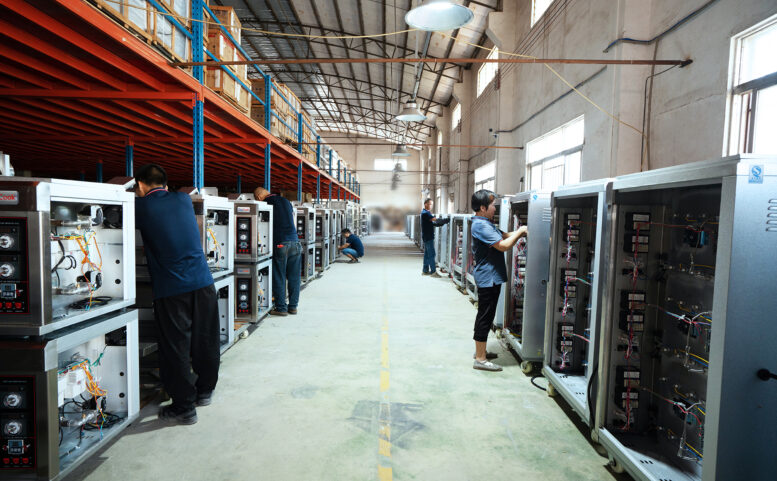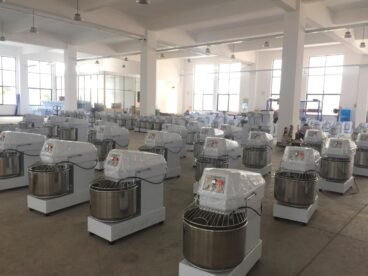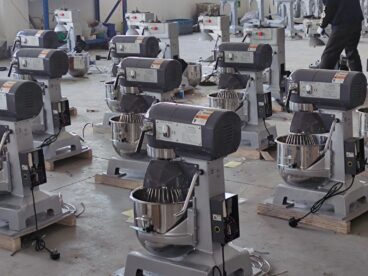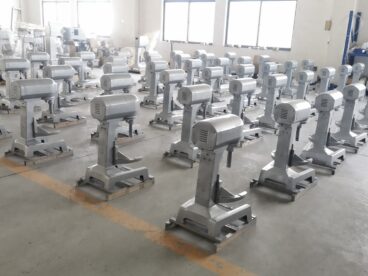Choosing the right type of oven for commercial baking is a critical decision for any bakery, restaurant, or food production facility. The right oven not only ensures the quality and consistency of baked goods but also impacts efficiency, energy consumption, and overall profitability. There are several types of ovens available for commercial baking, each with its own advantages and disadvantages. This article will explore the various types of commercial baking ovens, their features, benefits, and considerations to help you determine the best type of oven for your specific needs.
Types of Commercial Baking Ovens
- Deck Ovens
- Convection Ovens
- Rotary Rack Ovens
- Reel Ovens
- Conveyor Ovens
- Combi Ovens
- Brick Ovens
1. Deck Ovens
Features: Deck ovens have multiple baking chambers (decks) stacked on top of each other. Each deck can be individually controlled, allowing for simultaneous baking of different products at varying temperatures.
Benefits:
- Versatility:Suitable for a wide range of baked goods including bread, pizzas, pastries, and more.
- Consistent Results:Provides even heat distribution for consistent baking results.
- Durability:Built with heavy-duty materials, deck ovens are designed for long-term use.
Considerations:
- Space:Requires more space compared to other types of ovens due to its size.
- Cost:Typically more expensive upfront but can be cost-effective in the long run due to durability and versatility.
2. Convection Ovens
Features: Convection ovens use fans to circulate hot air throughout the baking chamber, ensuring even heat distribution and faster baking times.
Benefits:
- Efficiency:Reduces baking times and energy consumption.
- Uniform Baking:Ensures even browning and cooking of products.
- Compact Design:Takes up less space compared to deck ovens.
Considerations:
- Product Sensitivity:Not ideal for delicate baked goods that require gentle heat.
- Noise:The fan can be noisy, which may be a consideration for some environments.
3. Rotary Rack Ovens
Features: These ovens feature rotating racks that allow for large quantities of baked goods to be cooked evenly at the same time. They are ideal for high-volume baking operations.
Benefits:
- High Capacity:Can handle large batches of products simultaneously.
- Uniform Baking:Rotation ensures even baking and consistent results.
- Time-Saving:Reduces the need to manually rotate trays or pans.
Considerations:
- Maintenance:Requires regular maintenance to ensure the rotation mechanism works properly.
- Initial Cost:Higher initial investment compared to simpler oven types.
4. Reel Ovens
Features: Reel ovens have a rotating mechanism where trays or racks move in a circular motion inside the baking chamber.
Benefits:
- Consistency:Provides even baking through continuous movement.
- High Volume:Suitable for bakeries with high production demands.
Considerations:
- Space Requirements:Takes up considerable space due to its size.
- Complexity:More complex to operate and maintain than some other oven types.
5. Conveyor Ovens
Features: Conveyor ovens use a belt to move products through a heated chamber, ensuring continuous and consistent baking.
Benefits:
- Continuous Operation:Ideal for continuous production lines.
- Consistency:Ensures uniform baking without the need for manual intervention.
- Speed:Fast baking times, suitable for high-demand environments.
Considerations:
- Versatility:Less versatile compared to deck or convection ovens, mainly suitable for products that can be baked quickly.
- Space:Requires significant space for the conveyor belt system.
6. Combi Ovens
Features: Combi ovens combine convection, steam, and sometimes microwave cooking in one unit, offering versatility for a variety of baking and cooking needs.
Benefits:
- Versatility:Can be used for baking, steaming, roasting, and more.
- Efficiency:Reduces the need for multiple pieces of equipment.
- Precision:Allows for precise control of temperature and humidity.
Considerations:
- Cost:Higher initial investment due to advanced features.
- Complexity:Requires training to operate effectively.
7. Brick Ovens
Features: Brick ovens use natural materials like bricks and stones to create a unique baking environment, often wood-fired.
Benefits:
- Flavor:Imparts a unique, smoky flavor to baked goods, especially pizzas and artisanal bread.
- Aesthetic Appeal:Adds a rustic and traditional look to bakeries and restaurants.
Considerations:
- Maintenance:Requires regular cleaning and maintenance to keep the oven in good working condition.
- Space and Cost:Requires a dedicated space and can be expensive to install and maintain.
Conclusion
Selecting the best type of oven for commercial baking depends on several factors, including the types of products you bake, production volume, available space, and budget.
- For versatility and consistency, deck ovens are an excellent choice.
- For efficiency and space-saving, convection ovens are ideal.
- For high-volume operations, rotary rack ovens or reel ovens are suitable.
- For continuous production, conveyor ovens are the best option.
- For ultimate versatility and precision, consider investing in a combi oven.
- For unique flavor and aesthetic, brick ovens are unmatched.
Each type of oven has its strengths and potential drawbacks. By understanding your specific needs and the features of each oven type, you can make an informed decision that will enhance your baking operations and contribute to the success of your business.






